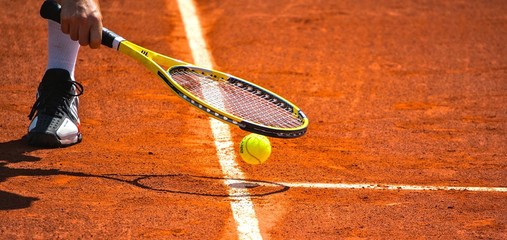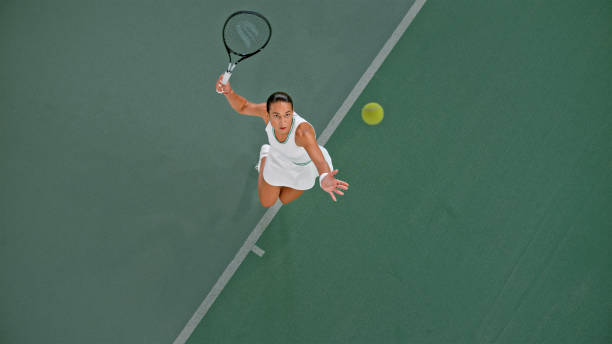Types of tennis
Tennis is a globally popular sport with millions of players and fans. Played both professionally and recreationally, it offers a wide variety of formats and styles. The game can be enjoyed by individuals or in teams, and it has evolved over centuries to include numerous variations. Whether played on different surfaces or in different formats, tennis provides a dynamic experience for players of all skill levels.
- Tennis for Ones
Singles tennis is the most common and traditional form of the sport. It involves two players, each occupying one half of the court. The objective is for each player to hit the ball over the net in such a way that the opponent cannot return it successfully. When the opposition strikes the ball out of bounds, makes a mistake, or fails to return the ball, points are scored.
In singles, the competition is purely individual, which makes it physically demanding as the player is responsible for covering the entire court. Matches are typically played in a best-of-three or best-of-five format, depending on the tournament rules. Singles tennis requires a wide range of skills, including agility, endurance, and strategic shot placement. The best singles players often possess excellent footwork and mental toughness, making the game both physically and mentally challenging.

- Doubles tennis
Doubles tennis is a variation in which two teams of two players each compete against each other. This format requires teamwork and coordination as each player is responsible for one half of the court, but players must also collaborate to cover the entire area effectively. Doubles tennis is typically played with more rapid exchanges of the ball and often involves a more aggressive style of play, with both teams looking for opportunities to serve and volley.
The main difference between singles and doubles is the importance of communication and teamwork in doubles. Doubles matches tend to be faster-paced due to the larger court coverage and the players’ ability to coordinate their movements and shots. Players often rely on their partners to cover certain areas of the court, allowing for a more dynamic and strategic game. Doubles tennis is played with the same scoring rules as singles, though the layout of the court is slightly modified to allow for more coverage by the two players on each team.
- Combined Doubles
In the tennis variation known as mixed doubles, each team is made up of one male and one female player. This format allows for gender diversity and provides unique challenges. Mixed doubles matches are played with the same basic rules as traditional doubles tennis, but the dynamic is altered by the different physical and strategic contributions of each gender. For instance, male players may often have stronger serves, while female players may focus on more precise shot placement or finesse play.
Mixed doubles tournaments are held at both the recreational and professional levels, with one of the most prominent events being the mixed doubles competition at Grand Slam tournaments such as The French Open, the Australian Open, the US Open, and Wimbledon. These matches are fast-paced and rely on the ability of the male and female players to complement each other’s skills.

- Surfaces for Tennis
Another key aspect that differentiates tennis is the variety of surfaces on which the game can be played. The surface affects the speed, bounce, and overall strategy of the game, and players often specialize in particular surfaces.
Hard Court:
Hard courts are typically made from asphalt or concrete and are considered to provide a medium-fast playing surface. The bounce of the ball is generally consistent, and the surface allows for both powerful shots and good movement. The US Open and the Australian Open are both played on hard courts, making it one of the most widely used surfaces in professional tennis.
Grass Court:
Grass courts are the traditional surface for tennis and provide a faster, more unpredictable bounce. The surface encourages fast, aggressive play, and players often employ serve-and-volley tactics. The earliest and biggest tennis concurrence, Wimbledon, takes place on grass. The slick nature of the grass also places a premium on precise footwork and balance.
Clay Court:
Clay courts are slower than both hard and grass courts, resulting in longer rallies. The surface causes the ball to bounce higher, allowing for more time to react to shots. Players with strong endurance and patience tend to excel on clay courts. The French Open is held on clay courts, and the surface is also common in many European tournaments. Clay courts require a distinct set of skills, such as sliding into shots and maintaining stamina throughout longer rallies.
- Other Tennis Versions
Beyond singles, doubles, and the different playing surfaces, there are other unique variations of tennis that cater to different audiences and skill levels:
- Wheelchair Tennis:
Played by athletes with physical disabilities, wheelchair tennis follows the same basic rules as traditional tennis, with one major difference: the ball is allowed to bounce twice before being returned, with the second bounce allowed on or outside the court. Wheelchair tennis has grown in popularity and is a staple in the Paralympic Games.
- Platform Tennis:
Played on a smaller court with walls surrounding the playing area, platform tennis is a variation of traditional tennis that is popular in colder climates. Players use solid paddles instead of rackets, and the ball is made of rubber. Platform tennis is typically played during the winter months in areas with colder weather.

- Beach Tennis:
Played on sand courts, beach tennis is a rapidly growing sport that combines elements of tennis and beach volleyball. Instead of using traditional rackets, players use paddles and play with a depressurized tennis ball. It is generally played in a relaxed, fun atmosphere, making it an excellent recreational option.
At the end
Tennis is a versatile sport with many types and variations, each offering a different challenge and experience for players. From the fast-paced action of singles to the strategic teamwork of doubles and mixed doubles, tennis accommodates all types of players. The surface on which the game is played also has a significant impact on the style of play, with grass, clay, and hard courts providing varying challenges. With its wide range of formats, tennis remains one of the most accessible and exciting sports in the world, enjoyed by millions in numerous forms and on different terrains.

